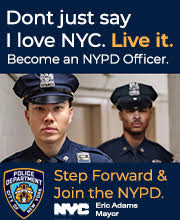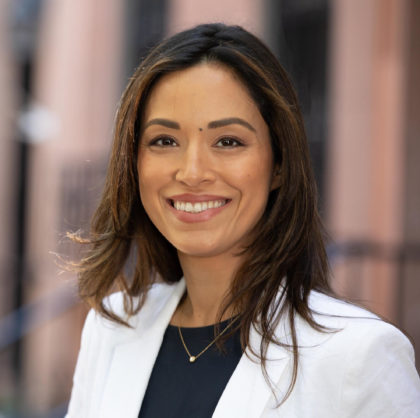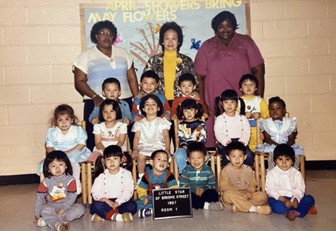The Candidates 2022: Carlina Rivera for for the 10th Congressional District
For the primary on August 23, I will be talking to candidates for the newly drawn NY10 and asking them to complete a customized TCQ&A. But since Carlina Rivera and I couldn’t get on each other’s calendars, she sent an unusually robust response, which answers a lot of questions and even includes photos from her childhood in NY-10.
I have contacted all the candidates; at the bottom are the ones who have chosen to participate so far.
1. How long have you lived in the district? And what is your education?
I was born in Bellevue Hospital [she is 38] and grew up in NY-10. My mom grew up in Brooklyn and emigrated from Puerto Rico to New York with her parents as a child. She raised me and my sister on her salary as a city worker in a Section 8 building on the Lower East Side called El Pueblo Nuevo – the new village. Here are some photos of me growing up in NY-10 [posted throughout the Q&A].
I graduated from Marist College with a B.A. in journalism after attending local schools my entire life. [Carlina attended St. Joseph’s School in Greenwich Village through 8th grade and Notre Dame School on St. Marks Place for high school.]
 2. Married? Partnered?
2. Married? Partnered?
I am happily married to my husband Jamie Rogers. He is a lawyer and entrepreneur and we met while both serving on Manhattan Community Board 3.
3. Kids? Pets?
After 16 unforgettable years, we recently lost our beloved pug, Yoshi. We are lucky to still have Yoshi’s best friend, Freddie, our 30-year-old turtle.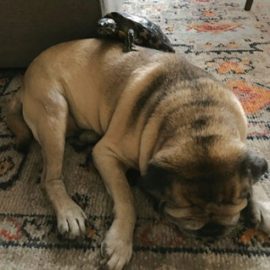
4. Where do you live?
Jamie and I recently moved to Kips Bay, which is within the council district I currently represent, after spending my entire life on the Lower East Side. We plan to move back into NY-10.
5. What do you do for a living?
Since 2018, I have proudly represented New York City Council District 2 as its City Council Member. My council district includes the diverse neighborhoods of the East Village, Flatiron, Gramercy Park, Rose Hill, Kips Bay, Murray Hill and the Lower East Side.
As a member of the Council, I’ve passed more pieces of legislation than any sitting member. I wrote and passed legislation to make sexual harassment a human rights violation under the New York City human rights law, make the Open Streets program permanent and equitable, and ensure basic dignity for app delivery workers. I’ve also passed bills holding shady landlords accountable and expanding affordable housing, and protecting small business owners during the pandemic. Outside of legislation, I created the nation’s first municipal abortion access fund to cover costs for patients who can’t afford care, and I championed the construction of New York City’s first digital skills training center at Zero Irving, prioritizing historically ignored lower income New Yorkers for tech workforce opportunities.
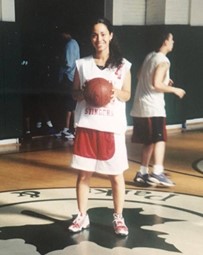 Before I ever ran for office, I started my career in afterschool programming at some of New York City’s highest-needs schools and then went on to create and organize initiatives for seniors and New Yorkers experiencing homelessness as at Good Old Lower East Side (GOLES), a local non-profit focused on social justice. I served on my community board (where I met my husband, go figure), as an organizer, and as a key leader on the taskforce that secured funding for East River waterfront resiliency in the immediate aftermath of Hurricane Sandy. I was there when the storm flooded our homes with eight feet of water, and once it receded, I helped coordinate thousands of volunteers to assist over 10,000 homebound residents as part of a recovery network that still supports families in the community today.
Before I ever ran for office, I started my career in afterschool programming at some of New York City’s highest-needs schools and then went on to create and organize initiatives for seniors and New Yorkers experiencing homelessness as at Good Old Lower East Side (GOLES), a local non-profit focused on social justice. I served on my community board (where I met my husband, go figure), as an organizer, and as a key leader on the taskforce that secured funding for East River waterfront resiliency in the immediate aftermath of Hurricane Sandy. I was there when the storm flooded our homes with eight feet of water, and once it receded, I helped coordinate thousands of volunteers to assist over 10,000 homebound residents as part of a recovery network that still supports families in the community today.
6. What do you hope to change, or do better, once in office?
Like many New Yorkers, to me, the city’s character has always come from the idea that people from around the world and across the country journey here in search of better opportunities, to open businesses, and to raise their families. There is no place I’d rather be. But, for too many current New Yorkers and would-be New Yorkers, it’s becoming more and more difficult to build and maintain a life here. I am for Congress to meet the moment and build a future that every New Yorker can see themselves in, to keep delivering for the communities that raised me, and to represent this new district with homegrown pride.
That means supporting policies and securing resources that will help make our district more livable for generations to come. Decades of disinvestment have led to housing instability and left many of the most vulnerable New Yorkers unable to afford a place to live. We need to prioritize public housing: building more of it, expanding Section 8 vouchers to every family that needs it, and making sure our existing housing stock is energy efficient, free from lead and disrepair, and protected from climate change. Having a livable city also means supporting our small businesses. In the City Council, I’ve prioritized helping local businesses through my State of the Storefronts bill, which requires the city to identify and propose solutions to local challenges faced by businesses, and by providing support in accessing federal pandemic relief funds. In Congress, I will build on these efforts by streamlining access to federal resources, especially for minority and women-owned businesses. I am committed to helping local businesses, the lifeblood of our city, thrive.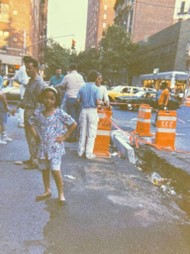
Creating a more livable city must also include ending senseless gun violence. We cannot keep waiting for the next tragedy to act, and there is still lots we can do to stem gun violence. I support a suite of legislation that will ban assault weapons, implement universal background checks, and get guns off our streets. But I firmly believe that we must also address the underlying issues that lead to gun violence and crime, by funding community-level violence intervention efforts, youth programming, counseling, and other strategies to bolster community well-being. I am proud to have supported these programs in my council district and believe they should be expanded across New York and the country. To make a livable city, Congress also has to prioritize public transit. For too long, Congress has spent billions of dollars on highways while neglecting public transit, as well as pedestrian and bicycle infrastructure. I would change this dynamic and deliver results to the 10th District by securing federal dollars for transit hubs at Atlantic Terminal and the World Trade Center, and by supporting legislation that would build out bicycle infrastructure, fund safer streets, and repair, expand, and green our public transit system.
7. What are the first three issues you will tackle if you win the election?
New York is at a crossroads. I’m running for Congress to turn my love for New York into a vision for the city that everyone can see themselves in. I will be a tireless advocate for New Yorkers and drive new and creative solutions as the city rebounds from the pandemic and rebuilds for the future. I understand the city’s most pressing problems, and also our limitless potential.
The issues New Yorkers face have only grown in their impact, but my record proves I’m well equipped to help deliver solutions as a Member of Congress, just like I have as a member of the City Council. After two years of a pandemic exacerbating inequities among so many of our communities, the need for our government to adapt to a new generation and the issues we face has never been clearer.
New Yorkers are hungry for leadership and a vision that’s as bold as it is pragmatic in taking on those fights, and I will use my platform and power in Congress to revitalize our city, improve our quality of life, restore public safety, and keep New York affordable for the people and families who live here. I’ll start by focusing on three key issues, housing, public health and healthcare, and transportation and livability:
Housing
To end the housing affordability crisis, we must build more housing—lots of it—so that every New Yorker – and every American can realize their dreams of long-lasting housing security.
We need to:
● Increase the housing supply to solve the housing crisis
● Fully fund NYCHA and treat it as the vital infrastructure it is
● Efficiently use federal aid to directly fund housing in NY-10
● Promote the development of low-income, affordable, supportive housing in New York and communities around the nation
Public Health and Healthcare
Healthcare should be a basic human right, no matter what. I have led the charge protecting New York’s communities—and people all over the country—from the Supreme Court’s shameless, deliberate attack on the basic human right to bodily autonomy, and I will bring that same fight to Washington.
We need:
● To ensure a just and equitable COVID recovery
● To bring an end to our maternal mortality and morbidity crisis and other disparate services including mental health
● To further expand access to health care through public hospitals and important fixtures in communities citywide
● To treat gun violence as the public health epidemic that it is with comprehensive and bold gun safety reforms
● To protect our basic human right to bodily autonomy by fighting for the funding and legal protections that cities, states, and federal facilities need to defend abortion access; repealing the Hyde Amendment; ensuring access to medication abortion; preventing Republicans from interfering with travel related to reproductive healthcare; protecting access to birth control and a range of contraceptive methods; and codifying Roe into law.
Transportation and Livability
We must invest in transit as the great equalizer – to keep this city running, safely, efficiently, and affordably.
Throughout my career, I’ve been a dedicated steward of public transit, accessible infrastructure, and open spaces that are so critical for a high quality of life in New York and every city in the country. Without expanded, but deliberate, investment in transit and livability, cities will never return to their historic role as engines of opportunity and economic mobility.
We need:
● We have an extensive mass transit system, but we need to bring it back to world-class status. It also needs to meet the needs of all people in this city.
● As Downtown sees an increase in its senior population and to fully serve people with disabilities, we must invest in mass transit that is fully accessible and a bus network that prioritizes its use of our streets.
● We need a transportation network that is seamlessly interconnected and safe for riders, pedestrians, and cyclists, prioritizing these cleaner, greener modes over vehicles and reducing congestion.
● Funding and designing a better network will be a priority as it has been during my Council tenure.
● NY-10 has a broad range of transit-rich areas and transit deserts like Red Hook. We have to approach this as a matter of equity to really serve the people of this district, and that can be said for the whole city too.
8. What is most important in helping the nation recover from the pandemic?
The human cost of pandemics is more than enough to instill a sense of urgency in our government’s actions, but the social, economic, and security ramifications have proven devastating as well. Scientists are already warning that the next pandemic could be worse.
While we ensure a complete and equitable recovery from COVID-19, we have to prepare now for what could come next. This begins by conducting an in-depth after-action analysis and lessons learned from our government’s response followed by long-term operational planning to ensure we are prepared for the next crisis. In Congress, I will be a champion of long-term policy planning and actions required to prepare our country to respond to the next crisis, including:
● Adequate, consistent, and sustained funding for public health infrastructure
● Robust information campaigns around pandemics, vaccines, treatments, and more, with a community-based approach to ensure information goes from credible messengers straight to the communities they serve with cultural sensitivities and language access top of mind
● Major investments in pathogen research, vaccine development, vaccine distribution methods, biosecurity risk assessment, and lab safety protocols
● A stronger social safety net to ensure that everyone — especially historically underserved communities — has access to adequate preventative healthcare, paid leave, child and elder care, stable and affordable housing, living wage job opportunities, and more, as they all make up the many facets of public health.
9. Name three ways that local issues important to you as a district resident can be solved (or helped) from a federal perch.
The role of a Member of Congress is not to thump their chest on Twitter and cable news. It’s to bring resources into the district they represent. I’ll be fighting both on the issues at the forefront of our national dialogue and for the district. It’s not mutually exclusive. We have to be able to do both in order to deliver for our communities.
My intimate knowledge of the city and my ability to address every issue through an equity lens make me best prepared to serve NY-10 and use the power of the federal office to bring tangible results to the district.
Issues that are top of mind in the day-to-day lives of New Yorkers that have been left off the national agenda are now at the forefront like they’ve never been before. There are local issues that are universally felt like housing, transit, and healthcare — I understand how people are experiencing them locally and I will tap into that deep understanding to drive solutions. Here is how:
● As the Representative for NY-10, I’ll be focused on bringing national resources to local problems. Take transportation, for example, one of my top priorities. In Congress, I will be responsible for procuring federal dollars for maintaining Brooklyn, Manhattan, and Williamsburg Bridges, the Holland and Carey car tunnels, the PATH train and numerous subway tunnels, repairing and re-envisioning the BQE, funding the transit hubs at Atlantic Terminal and the World Trade Center, and pushing forward Phase 3 of the Second Avenue subway. I will bring to Congress a deep knowledge of New York’s transportation infrastructure and future goals, as well as the complex interagency negotiations necessary for its maintenance, improvement, and expansion. And I will prioritize bringing federal transportation funding to NY-10 and make sure that money goes exactly where it needs to through my oversight role to keep this city and country running.
● In my time in City Council, I’ve built a record of delivering legislative victories big and small for New Yorkers on issues ranging from the international and national to the hyperlocal, whenever and wherever I can — and that’s exactly what we need in Congress. From major pieces of legislation to budget wins and appropriations, I will use the power of my office as a member of Congress to draft bills, build movements around others and fight for progress in NY-10 on the national stage. I will be a strong yes vote and advocate for existing legislation to tackle issues that affect us here locally, and I will craft new and innovative legislation to create new grant opportunities for housing and infrastructure projects, cut costs for New York families, enact a nationwide gun buyback program, and build on my record of protecting and expanding access to reproductive healthcare.
● The best members of Congress are those with deep roots in their district, a sophisticated, detailed understanding of its needs, and a record of getting results for their communities. Resident by resident, case by case, I will use expanded resources at my disposal from the federal perch to build out a sophisticated constituent services operation with an ear to the ground on the issues most impacting constituents of NY-10.
10. What committees would you like to sit on if elected?
I’ll be going to Congress as a Freshman lawmaker, and I’m aware that makes me the new kid on the block. Whatever committee assignments I receive, I’ll be honored to carry out my work in those capacities with an ear always close to the ground in the district so I can maximize my impact here at home in NY-10.
I’m most interested in the Energy and Commerce Committee, which deals with health care, climate change, and environmental protection, and the Transportation and Infrastructure Committee, which deals with mass transit. These two committees would allow me to play an even larger role in legislating on the issues that are my highest priorities in tackling if I am elected, and what I believe are central to revitalizing New York City.
11. What do you love about the district?
From a young age, I knew that I was being raised not only by my family but also by my community, which is now NY-10. And I saw that community made life better—that working together, sharing resources, and looking out for one another made us all safer, more secure, and more cared for.
Community extended well beyond the walls of our building, to the streets of our neighborhood on the Lower East Side, where I spent summers playing basketball at city courts and with friends at Hamilton Fish Park pool; where I could always count on the bakers at the Streit’s factory for a free piece of fresh matzoh; where, when I got older, I got my first job as a summer camp counselor; and I can still pop into Casa Adela on Avenue C, where several generations of the same family have been serving Puerto Rican food for 46 years, with the same salsa music playing and the TV perpetually tuned to either telenovelas or NY1.
Growing up, I always felt that the community belonged to us, and we belonged to the community. And I saw that our reciprocal bonds made life better—that working together, sharing resources, and looking out for one another made us all safer, more secure, and more cared for.
That is why I feel enormously lucky to have spent my life in New York—and specifically in what is now NY-10. After the new Congressional district borders were drawn, I took a look at the map and realized that NY-10 is truly my home. It’s where I was born. It’s where I spent my childhood and went to school. It’s where I spent weekends visiting my grandparents, who’d take us to Sunday matinees at the Cobble Hill Theater, bowling at Melody Lanes in Sunset Park, and shopping at what was then A&S and is now the Macy’s on Fulton. It’s where I serve as District 2’s representative on the City Council.
I love NY-10—and I love this city. New York’s character has always come from the idea that people from around the world and across the country journey to come here in search of better opportunities, to open businesses, and to raise their kids. Like so many millions of people, there is no place I’d rather be.
In fact, I launched this campaign with a love letter to New York City and this district. You can read it here.
12. What do you think is a challenge for this district?
There are several neighborhoods in NY-10 that are climate frontline communities, and that’s proven to be a tremendous challenge for us as we still see the aftermath of Sandy in our communities to this day. It’s why I fought so hard to ensure we had a climate resiliency plan to invest in flood protection, and it was our community that came to the table to secure the federal funding to make it happen.
The East Side Coastal Resiliency project is a first-of-its-kind urban resiliency project, and the first of anything can be scary. ESCR is the only fully funded protection plan in New York City, and it is moving forward despite the fiscal crisis because we fought to guarantee those budgetary commitments. It will ultimately protect our communities for the next 100 years against the effects of climate change and provide a world-class park and recreation area for everyone.
The challenge will be ensuring we can secure equivalent project funding for other frontline communities throughout the district.
Another significant challenge in NY-10 will be increasing housing supply — particularly affordable housing — in areas that have historically said “no, not in my back yard.” Ultimately, we can’t solve the housing crisis without increasing the amount of housing, and every neighborhood should do its part in increasing density.
13. What is challenging about representing it?
At this moment, we are facing a difficult national political environment and a multitude of challenges that are bringing into question our trajectory as a country and a city. Our challenges are layered and they are consequential – our most personal freedoms, income inequality, a growing climate threat that disproportionately impacts our frontline communities, and a continued housing crisis. It’s often asked of me, what can a Democratic elected official deliver in office? And how can Democrats advance the issues that are so important to us in the face of these challenges?
The answer is to make progress wherever and however we can, and do the hard work of governing, legislating, and finding creative solutions even in adverse political environments. We can — and frankly, we must — advance our priorities even when big victories are out of reach.
We can support states and municipalities that are securing abortion access. We can secure the federal resources our neighborhoods need for housing, transit, healthcare, gun violence prevention, and climate. We can keep moving the ball forward, all the time, on every issue, even in small ways, because the alternative is surrendering our future to a right-wing agenda. And we can’t afford to let that happen.
When I was first elected to City Council in 2017, I became Chair of the Committee on Hospitals and played a leading role in shepherding New York’s healthcare system, the largest in the country, through the pandemic. I fought against closures and negotiated for more resources, standing with frontline healthcare workers to battle COVID-19 as a city. Beginning this term, I’ve taken on a new challenge in my role as Chair of the City Council’s Committee on Criminal Justice, tackling the grave inequities of our criminal justice system and the crisis at Rikers Island. Just like the pandemic, it isn’t easy or simple, but I know that we have no option other than to make progress one step at a time, hearing by hearing, bill by bill, vote by vote. That’s how I’ve governed in the City Council, and it’s how I will govern in Congress.
The candidates
Brian Robinson
Dan Goldman
Mondaire Jones
Jo Anne Simon
Elizabeth Holtzman
Maud Maron
Yan Xiong
Yuh-Line Niou
Jimmy Li
Quanda Francis
Peter Gleason





